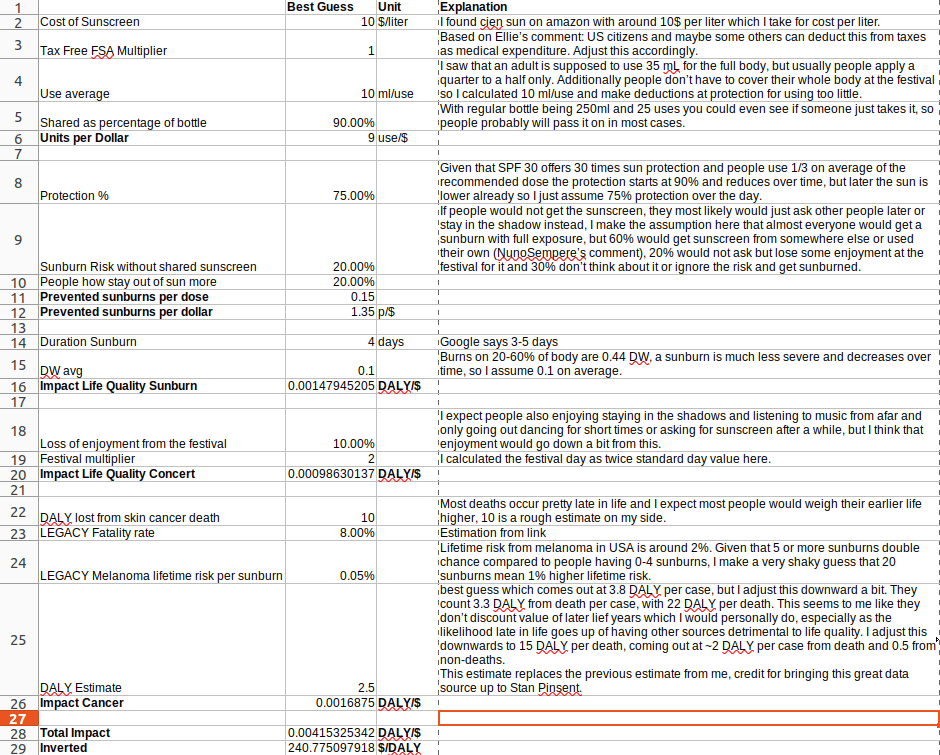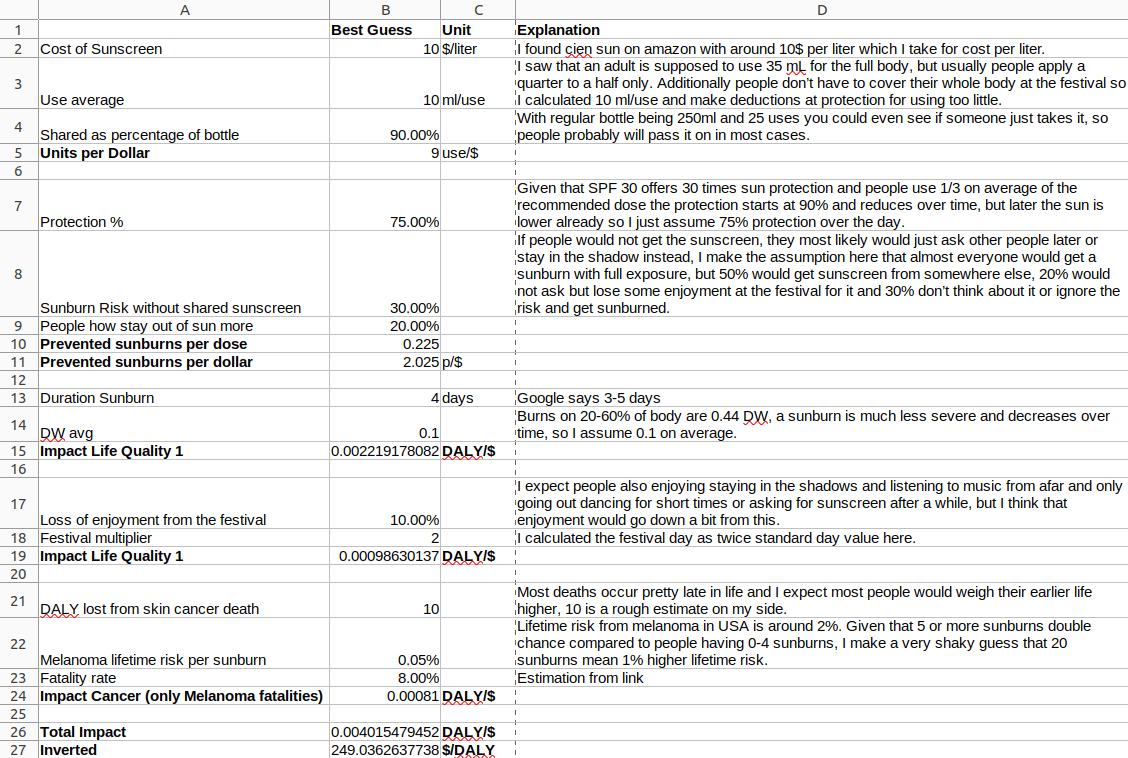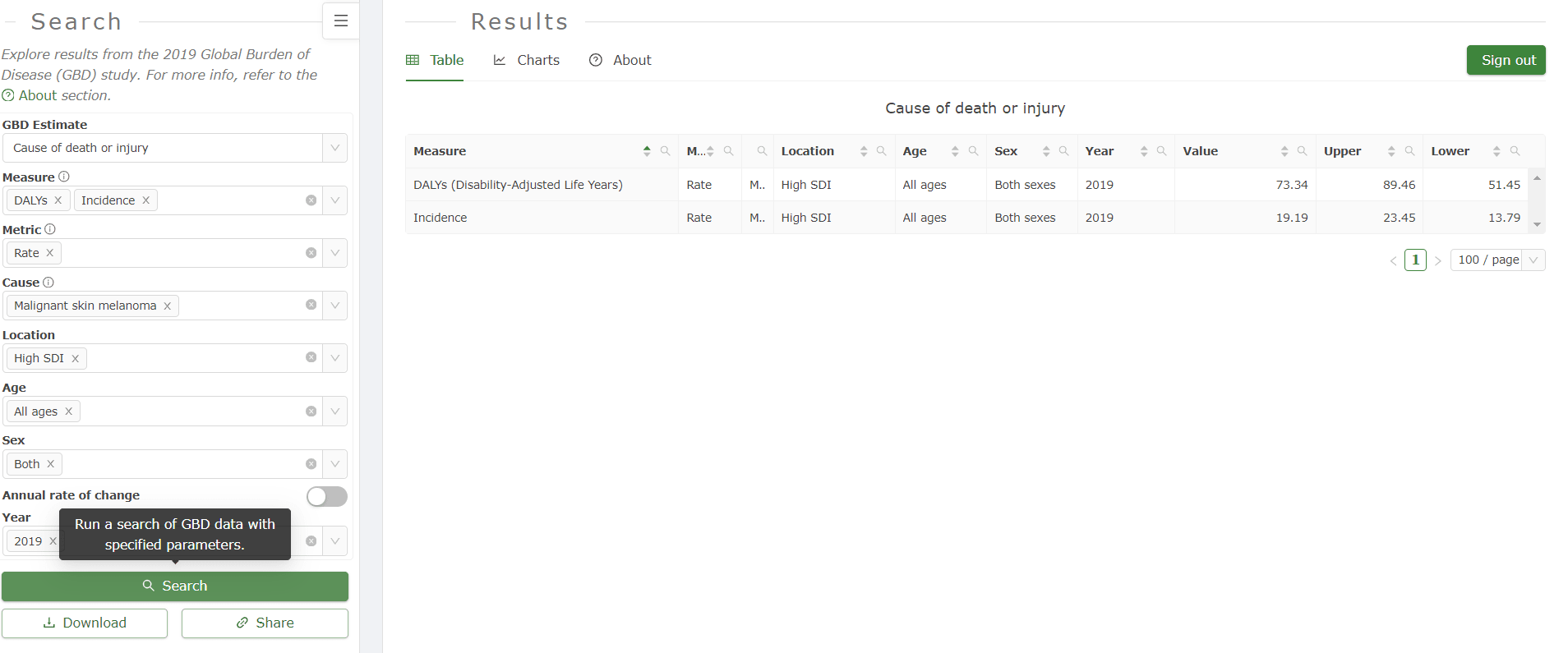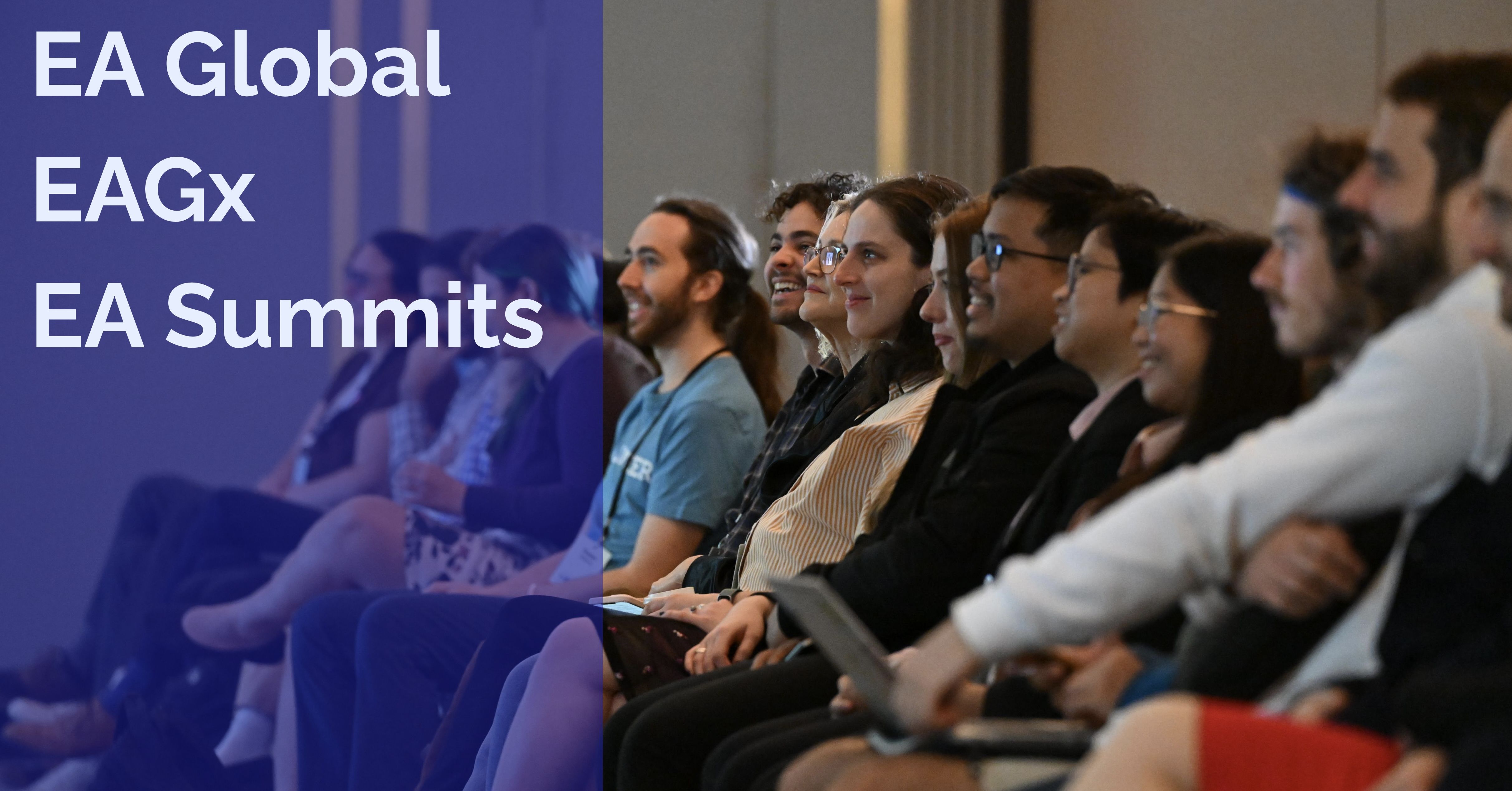Backstory
I recently was at a music festival, where we stood in a long queue in the scorching sun. The festival would go from around 10 am to 10 pm and all stages were outdoor with practically no shadows to be found. My group had another person besides myself with sunscreen and I decided on passing my sunscreen backwards to the group behind us who didn’t bring any, with the comment that they should continue passing it on afterwards. I did that just because it felt nice to do; a small act of good, but when thinking about it I became pretty sure that this is much more cost effective than typical interventions in rich countries.
I spend a few hours reading up and calculating likely cost effectiveness of this action and am now pretty certain that it is less cost effective than the best global health interventions like de-worming and malaria treatment and prevention, but I’m also quite certain that it is in the same order of magnitude.
I want to use this example mainly to spark a discussion about the general category of local interventions like this. Not scalable, but maybe cost effective on a small scale and therefor overlooked. Here is an analysis with calculations for the sunscreen example.
1 Sunscreen
1.1 Idea
1. Buy the cheapest moderately high SPF sunscreen (while avoiding fake products).
2. Write “please pass me along when finished” on the sunscreen.
3. Take it to an outdoor event, with queue, where people are likely to be in the sun for a long time.
4. Pass it along behind you.
1.2 Sources of good
The direct sources of good are:
1. Less pain and annoyance from sunburn.
2. More enjoyment at the event.
3. Less skin cancer.
1.3 Calculation
This was pretty difficult to do and I expect it be very high variance, I expect I’m wrong by around a factor of 3 in the first 2 categories and gave up on the full skin cancer calculation.
As far as I saw there is no paper with clear listed stuff like “lifetime risk of skin cancer per sunburn”. Only information fragments scattered across the internet. I did finish a very rough estimate of effectiveness gained from prevention of melanoma fatalities, but I could well be wrong there by an order of magnitude. I did not count fatalities from non-melanoma, or loss of life quality or cost for treatment for either melanoma or non-melanoma.
The first relevant calculation is how many units of sunscreen you get per dollar, then how much protection each dose is expected to give from sunburn. Then the consequences of the sunburn can be calculated as pain/annoyance and skin cancer. Additionally loss of enjoyment at the event can be calculated from an estimate of people who avoid the sun at the event, in order to not get burned. I list sources and considerations in this sheet. You can adjust your own best guesses for the inputs. I also included a screenshot here:
I got 250$/daly in the end. In comparison malaria treatment costs around 150$/daly and is currently rated among top causes (link).
1.4 Discussion
This intervention seems to be very cost-effective but less so than top treatments. There are additional benefits not included like non-melanoma fatalities prevented and loss of life quality even from effective treatments, but it might be that GiveWell does also not include such metrics (feedback on what GiveWell typically includes would be appreciated) .
The biggest reason why it might still be worth it even though it is not the most effective one is if you do it from your non-EA budget, given that it is tangible, might give you a nice feeling and look good in front of your friends :D
Maybe some people even ask you how you got the idea and you can explain what EA is about without barging in with the topic yourself.
There are other reasons like people feeling better about society, but at this point it feels like I’m reaching to make the idea look better in my eyes than it warrants.
A way to scale this up to a slightly larger scale endeavor, would be to place dispensers at beaches (maybe ones you can’t remove and that have a few seconds delay between servings so people can’t go there and just fills up their own tube). An advantage would be that you can scale the costs down a lot for cheap sunscreen in bulk.
2. Conclusion
I hope this example served as a good illustration of a possibility for small scale local EA and hope that you have other ideas that might be high impact on a small scale!
I’m sure I made some mistakes and I'm happy for feedback to learn from them.
Update
Based on Stan Pinsent's comment: I added a DALY estimate for melanoma case, based on vizhub.healthdata, which I adjusted downard a bit (reason explained in table). It still pushed my DALY/melanoma case from 0.8 to 2.5.
Based on NunoSempere's comment: I adjusted sunburn risk without shared sunscreen down from 30% to 20%.
Based on Ellie's comment: I added a multiplier in the table for possible tax deductions, in the current table it's at 1, so does not influence the calculation.
In total $/DALY changed from 250 to 240.
Updated sheet from ods to google sheets here.







Interesting! This actually reminded me of a flower farmer I interviewed 4 years ago as part of my masters thesis and the reason why I was interviewing him was that he had no (third party) "social certification" for his flower production but brought up giving sunscreen to his employees which no other farmer that I interviewed (including the ones with social certification mentioned) did. Unfortunately I wasn't able to prioritize the issue as part of the other things I was assessing, but it did leave me thinking (a lot!).